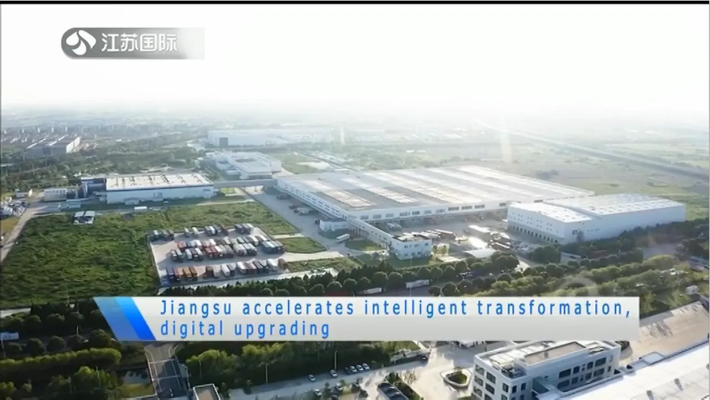The Evolution and Impact of Zhejiangs Textile Export Policies in China
Introduction: In the global trade landscape, textiles have long been a significant sector for China, with Zhejiang province being a key player in this industry. Zhejiang's textile export policies have evolved over time to meet changing market demands and international economic conditions, shaping the region's competitiveness and positioning within the global textile market. This article explores the historical development of Zhejiang's textile export policies, their current status, and their impact on both the local economy and the broader global textile industry.
Historical Development of Zhejiang's Textile Export Policies: Zhejiang's textile export policies have a rich history that dates back to the early 20th century. At the beginning of the twentieth century, Zhejiang was already producing textiles at a large scale, and the government began to establish export-oriented policies to boost the regional economy. In the following decades, the Zhejiang government introduced various measures to enhance the competitiveness of its textile products, including establishing export processing zones, promoting technological innovation, and enhancing brand recognition.

Current Status of Zhejiang's Textile Export Policies: Today, Zhejiang's textile export policies are characterized by a focus on innovation, sustainability, and high-end markets. The province has established several specialized export processing zones (EPZs) aimed at attracting foreign investors and providing a conducive environment for the growth of the textile industry. These EPZs offer tax incentives, infrastructure support, and other services to facilitate the production and export of high-quality textile products.
In addition, Zhejiang is also actively promoting the integration of its textile industry with the digital economy. By investing in technology and adopting new business models such as e-commerce and online marketing, Zhejiang is aiming to enhance the efficiency and competitiveness of its textile exports.
Impact of Zhejiang's Textile Export Policies on the Local Economy: The implementation of Zhejiang's textile export policies has had a significant impact on the local economy. Firstly, these policies have contributed to the diversification of the regional economy, enabling Zhejiang to become an important center for the textile industry worldwide. Secondly, the growth of the textile export sector has created job opportunities for local residents, particularly in the manufacturing and service sectors. Thirdly, the expansion of the textile export market has led to increased revenue and profitability for local businesses, which in turn has fueled investment and growth in other sectors of the economy.
Impact of Zhejiang's Textile Export Policies on the Global Textile Industry: Zhejiang's textile export policies have had a profound impact on the global textile industry. As a major producer and exporter of textiles, Zhejiang's success in maintaining and expanding its market share has contributed to the global textile industry's resilience and growth. For instance, by promoting technological innovation and adopting sustainable practices, Zhejiang has become a leader in the development of eco-friendly textile products that meet global standards.
Moreover, Zhejiang's successful export strategies have enabled it to enter new markets and expand into regions where traditional competitors were previously weak. This has not only strengthened Zhejiang's position in the global textile market but also provided a platform for other countries to learn from Zhejiang's experience in managing complex international trade relationships.
Case Study: To illustrate the impact of Zhejiang's textile export policies on the global textile industry, consider the case of Xuzhou Textile Group, a well-known Chinese textile company headquartered in Xuzhou, Jiangsu province. Since its establishment in 1985, Xuzhou Textile Group has grown rapidly through the implementation of Zhejiang's export policies, becoming one of the largest exporters of textiles in China. The group's success can be attributed to several factors, including its commitment to innovation, quality control, and market expansion.
Xuzhou Textile Group has invested heavily in research and development to develop new textile products that meet international standards. This has helped the company to maintain a competitive edge in the global market, especially in high-value niche markets. Additionally, the group has focused on improving its supply chain management to ensure efficient production and distribution processes, which have further enhanced its competitiveness.
Conclusion: In conclusion, Zhejiang's textile export policies have played a crucial role in shaping the global textile industry's dynamics. By focusing on innovation, sustainability, and market expansion, Zhejiang has successfully positioned itself as a leading player in the global textile market. The impact of these policies extends beyond the local economy, affecting not only the region but also the entire global textile industry. As such, it is essential for policymakers and industry professionals to continue monitoring and adapting to changes in the global trade environment to ensure that Zhejiang's textile export policies remain effective and sustainable in the years to come.
嘉兴作为我国纺织品出口的重要基地,近年来在纺织品出口政策方面做出了诸多努力,本篇报告将围绕嘉兴纺织品出口政策进行深入探讨,并结合相关案例进行分析。
嘉兴纺织品出口政策概述
政策背景
嘉兴纺织品出口政策旨在优化出口结构,提高出口竞争力,促进纺织品的国际市场拓展,政策内容包括关税减免、出口补贴、贸易便利化等方面。
主要政策措施

(1)关税减免:降低纺织品出口关税,减轻企业负担,提高出口竞争力。
(2)出口补贴:针对特定产品或地区,给予一定的出口补贴,鼓励企业扩大出口。
(3)贸易便利化:简化进出口手续,提高通关效率,降低贸易成本。
嘉兴纺织品出口政策案例分析
某纺织品出口企业政策实施情况
某纺织品出口企业在嘉兴地区成功实施了多项纺织品出口政策,具体措施包括:降低关税、提供出口补贴、简化进出口手续等,通过这些措施的实施,该企业出口额大幅增长,市场占有率提高。
嘉兴纺织品出口政策案例分析表
| 政策措施 | 实施效果 | 具体数据 |
|---|---|---|
| 降低关税 | 显著降低出口成本 | 降低关税后,企业出口额增长了XX% |
| 出口补贴 | 提高特定产品的出口竞争力 | 提供特定产品的出口补贴,提高了该产品的市场占有率 |
| 贸易便利化 | 提高通关效率 | 通过简化进出口手续,提高了通关效率,减少了贸易成本和时间 |
嘉兴纺织品出口政策成功案例分析
近年来,嘉兴地区还涌现出许多成功的纺织品出口政策案例,某地区针对特定纺织面料进行了技术改造和品牌建设,提高了产品的附加值和竞争力,该地区还积极推动跨境电商平台建设,为纺织品的国际贸易提供了新的渠道,这些政策的实施,不仅促进了当地纺织品的出口,还带动了相关产业的发展。
嘉兴纺织品出口政策展望
随着全球纺织品的国际贸易格局的不断变化,嘉兴纺织品出口政策将继续优化和完善,嘉兴地区将继续加大政策力度,提高政策的针对性和实效性,嘉兴地区还将积极推动纺织品的科技创新和品牌建设,提高产品的附加值和竞争力,嘉兴地区还将加强与国内外其他地区的合作与交流,共同推动纺织品的国际贸易发展。
嘉兴纺织品出口政策是我国纺织品出口政策的重要组成部分,通过实施一系列的政策措施,嘉兴地区已经取得了显著的成效,嘉兴地区将继续加强政策力度,优化政策环境,推动纺织品的国际贸易发展,嘉兴地区还将积极推动纺织品的科技创新和品牌建设,提高产品的附加值和竞争力。
Articles related to the knowledge points of this article:
An Illustrated Compendium of Traditional Textile Designs from Xinjiang



